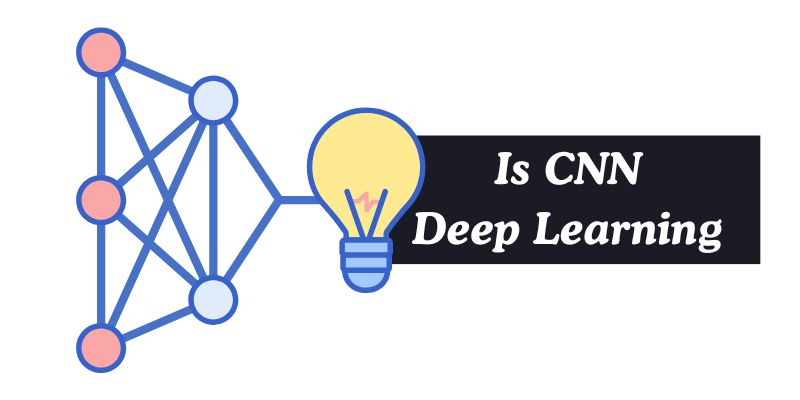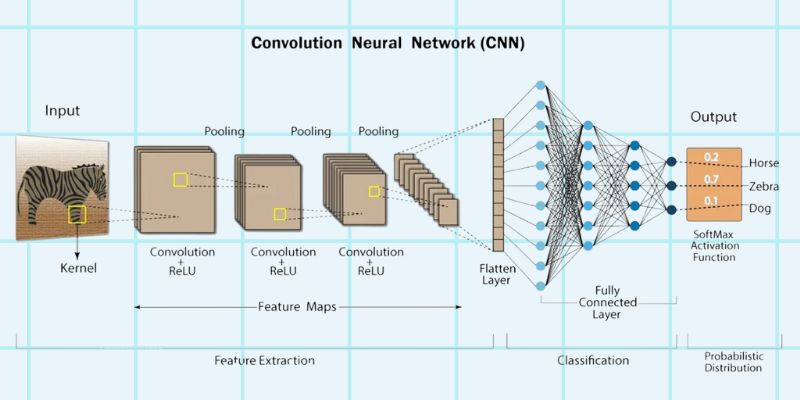Is CNN deep learning? If you’ve ever wondered how machines recognize faces, identify objects, or even detect diseases from images, the answer lies in Convolutional Neural Networks (CNNs). These powerful models are the backbone of deep learning, revolutionizing industries with their ability to process visual data like never before. Let’s uncover what makes CNNs a cornerstone of AI innovation.
Is CNN Deep Learning?
Yes, Convolutional Neural Networks (CNNs) are a type of deep learning. They are designed to automatically learn and extract features from input data through multiple layers, such as convolutional and pooling layers.
This hierarchical learning approach, where each layer builds on the previous one, is a key characteristic of deep learning models. CNNs excel in tasks like image recognition and processing, making them a fundamental tool in the deep learning field. Let’s delve deeper into their architecture and applications to understand how they function and contribute to AI advancements.
Understanding Convolutional Neural Networks (CNNs)
Convolutional Neural Networks are a specialized class of deep learning models designed to process data with a grid-like topology, such as images and time-series data. Unlike traditional neural networks that are fully connected, CNNs leverage a local connectivity pattern between neurons, effectively capturing spatial hierarchies in data. This unique architecture enables CNNs to learn and extract features directly from raw input, reducing the need for manual feature engineering.
Core Components of CNN Architecture
A typical CNN architecture comprises several key layers, each serving a distinct function in the data processing pipeline:
Convolutional Layer: This layer applies a set of learnable filters (kernels) to the input data. As the filter traverses the input, it performs element-wise multiplications, producing feature maps that highlight various aspects of the data, such as edges or textures. The depth of the output feature map corresponds to the number of filters used.
Activation Function (ReLU Layer): Following the convolutional layer, an activation function like Rectified Linear Unit (ReLU) is applied to introduce non-linearity into the model. ReLU replaces negative values with zero, enabling the network to model complex relationships.
Pooling Layer: Also known as subsampling or downsampling, this layer reduces the spatial dimensions of the feature maps, thereby decreasing computational complexity and mitigating the risk of overfitting. Common pooling operations include max pooling and average pooling.
Fully Connected Layer: After several convolutional and pooling layers, the high-level reasoning is performed via fully connected layers. Here, the input is flattened into a one-dimensional vector and passed through one or more dense layers to perform classification or regression tasks.
The Role of CNNs in Deep Learning
Deep learning encompasses neural networks with multiple layers that progressively extract higher-level features from raw input. CNNs epitomize this approach by stacking multiple convolutional and pooling layers, each capturing increasingly abstract features of the data. This hierarchical feature learning is a hallmark of deep learning models, enabling CNNs to excel in tasks involving complex data representations.
Applications of Convolutional Neural Networks
The versatility of CNNs has led to their adoption across various domains:
- Image and Video Recognition: CNNs have set benchmarks in image classification tasks, effectively categorizing images into predefined classes. They are also employed in video analysis for action recognition and scene understanding.
- Object Detection and Segmentation: Beyond classification, CNNs can detect and localize objects within images, a critical function in applications like autonomous driving and surveillance. Image segmentation further allows for partitioning images into meaningful regions, facilitating detailed image analysis.
- Medical Image Analysis: In healthcare, CNNs assist in diagnosing diseases by analyzing medical images such as X-rays, MRIs, and CT scans. They have been instrumental in identifying anomalies and segmenting medical imagery for treatment planning.
- Natural Language Processing (NLP): CNNs have been adapted for NLP tasks, including sentence classification, sentiment analysis, and machine translation. By capturing local features in text data, CNNs contribute to understanding and generating human language.
- Anomaly Detection: CNNs are utilized in identifying unusual patterns or outliers in data, which is essential in fields like finance for fraud detection and in manufacturing for quality control.
Advantages of CNNs
Through parameter sharing and local connectivity, CNNs significantly reduce the number of parameters compared to fully connected networks, enhancing computational efficiency and reducing the likelihood of overfitting.
The architecture of CNNs allows them to recognize patterns regardless of their position in the input, making them robust to translations and distortions in data.
CNNs eliminate the need for manual feature engineering by learning relevant features directly from the data during training, adapting to the specific nuances of the dataset.
Challenges and Considerations
Training CNNs effectively often necessitates large labeled datasets to capture the variability in data and prevent overfitting.
The complexity of CNN architectures demands substantial computational power, often requiring specialized hardware like Graphics Processing Units (GPUs) for efficient training and inference.
The deep and layered structure of CNNs can make it challenging to interpret the decision-making process, posing difficulties in applications where explainability is crucial.
Follow Blockchain Bulletin Weekly for more!

